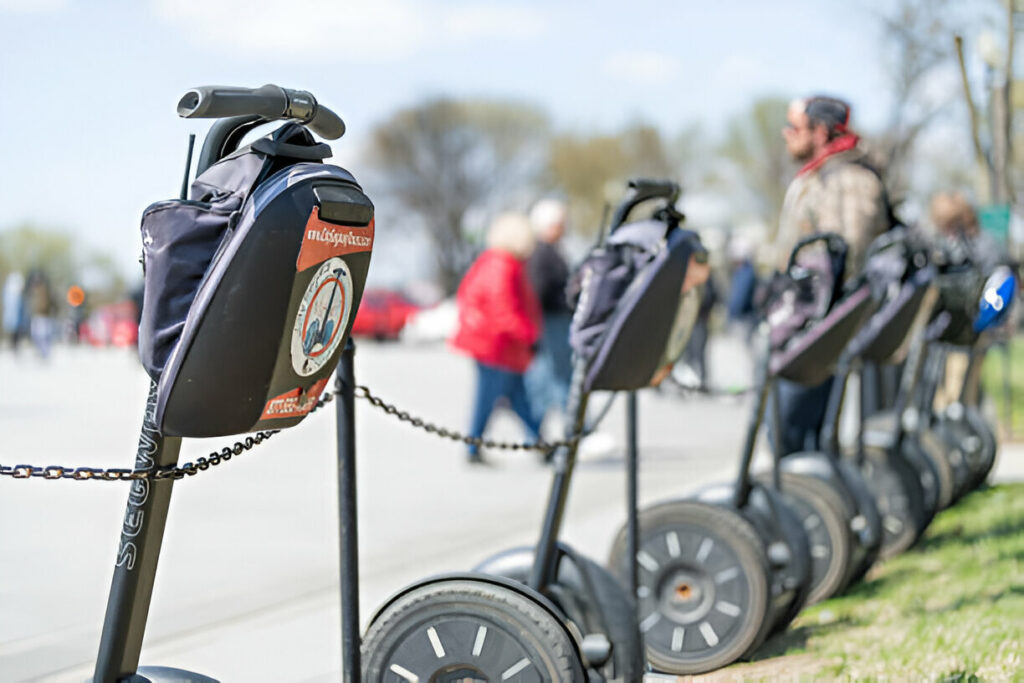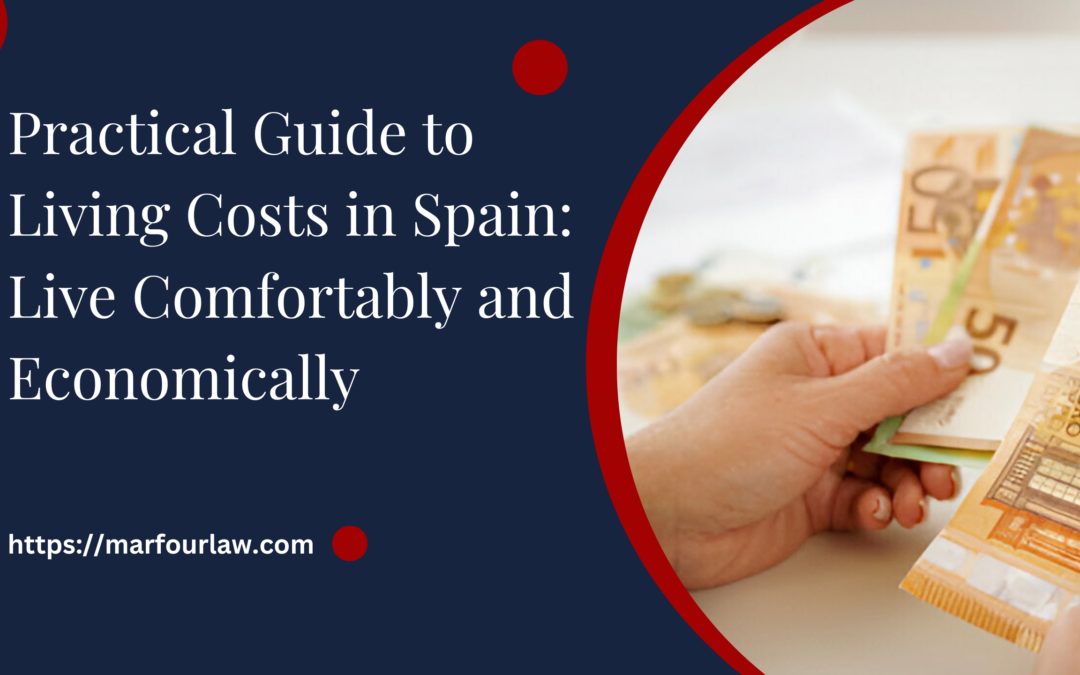Comparing Spain to the USA and Australia, Madrid emerges as a focal point for understanding the Living Costs in Spain. Madrid, Spain’s vibrant capital, presents a unique blend of cultural richness and economic dynamics that set it apart from cities like New York or Sydney.
Whether it’s housing, daily expenses, or lifestyle comparisons, delving into these details sheds light on what makes a living in Madrid distinct from major cities in the USA and Australia.
Living Costs in Spain: Economic Landscape in Spain, USA, and Australia
Living costs, including housing, consumer goods, healthcare, and education, vary significantly between countries due to their economic landscapes. This analysis compares Spain with the USA and Australia to understand these differences.
GDP Impact: How it Affects Living Costs in Spain
GDP (Gross Domestic Product) serves as a measure of a country’s economic performance and productivity. It influences living costs in the following ways:
- Impact on Housing Costs: Countries with higher GDP generally experience greater demand for housing, leading to increased prices in real estate markets. This can result in higher rents and property values, impacting the overall cost of living.
- Consumer Goods and Services: Higher GDP correlates with higher incomes and consumer spending power. Due to increased demand and economic activity, consumer goods and services may be more expensive in countries with higher GDPs.
- Healthcare and Education: GDP affects a country’s ability to invest in healthcare and education systems. Nations with higher GDP often allocate more resources to these sectors, providing better access to healthcare services and higher-quality education, which can affect Living Costs in Spain.
Currency Exchange Rates: Purchasing Power Differences
Currency exchange rates play a crucial role in determining the purchasing power of individuals and expatriates living in different countries:
- Purchasing Power Parity (PPP): PPP compares the relative value of currencies by considering the cost of a standard basket of goods and services. It helps assess the real purchasing power of currencies in different economic environments, indicating how far money goes in each country.
- Impact on Expatriates: Exchange rate fluctuations impact expatriates’ living standards and salary values in foreign countries. A stronger domestic currency relative to the host country’s currency enhances purchasing power, while a weaker currency diminishes it.
- Financial Planning Considerations: Individuals and businesses must consider currency fluctuations when making international financial decisions. Strategies such as hedging and diversification help mitigate risks associated with currency volatility, ensuring stable financial planning.
Spain: Economic Landscape and Living Costs in Spain

Housing Market Dynamics:
Spain’s GDP directly influences the housing market, affecting rental prices and property values. Higher GDP typically correlates with increased demand for housing, particularly in major cities like Madrid and Barcelona, leading to higher costs for residents.
Consumer Spending Power:
Spain’s GDP affects the affordability of consumer goods and services. A higher GDP generally means higher incomes and greater consumer spending power, influencing the cost and availability of everyday items and services across the country.
Healthcare and Education Funding:
The level of GDP determines the government’s investment in public services like healthcare and education. Higher GDP usually translates to better-funded public healthcare systems and education facilities, offering more accessible and affordable services to residents.
Comparative Purchasing Power:
Spain’s currency exchange rates impact the purchasing power of residents and expatriates. Fluctuations in exchange rates can affect how far euros stretch compared to other currencies, influencing the cost of living for international residents and travelers.
Impact on Expatriates:
Exchange rate fluctuations can significantly impact expatriates living in Spain. A stronger euro relative to their home currency increases their purchasing power locally, while a weaker euro reduces it, influencing their financial planning and lifestyle choices.
Financial Strategies:
Residents and businesses in Spain employ various financial strategies to manage currency risks and optimize financial planning amidst exchange rate volatility. Strategies may include hedging, diversification of currency holdings, and using financial derivatives to mitigate risks.
USA: Economic Landscape and Living Costs

Urban Housing Markets:
The USA’s GDP directly influences housing affordability, particularly in major urban centers like New York and San Francisco. Higher GDP often leads to increased demand for housing, pushing up rental and property prices in these areas.
Consumer Market Impact:
GDP levels impact consumer goods prices and the purchasing power of US residents. Higher GDP generally supports a robust consumer market but can also lead to higher costs due to increased demand and economic prosperity.
Healthcare and Education Costs:
GDP influences the funding and accessibility of healthcare and education in the USA. While higher GDP supports better-funded public services, private healthcare and education options can be expensive, impacting overall living costs.
Purchasing Power Considerations:
The US dollar’s exchange rate affects domestic and international purchasing power. Exchange rate fluctuations can impact the cost of imported goods and services, influencing inflation rates and consumer spending habits.
Expatriate Financial Dynamics:
Exchange rate movements affect expatriates living in the USA. A strong dollar can increase expatriates’ purchasing power, while a weak dollar may reduce it, impacting their lifestyle and financial decisions.
Financial Risk Management:
US residents and businesses use financial risk management strategies to hedge against currency risks, such as currency hedging, forward contracts, and options trading, to protect against adverse exchange rate movements.
Australia: Economic Landscape and Living Costs

Urban Property Markets:
Australia’s GDP influences housing affordability, particularly in Sydney and Melbourne. Higher GDP typically leads to increased demand for property, driving up prices and rental costs in urban centers.
Consumer Spending Patterns:
GDP levels impact consumer spending patterns and the affordability of goods and services in Australia. Higher GDP supports higher consumer spending but can also lead to higher costs due to increased economic activity.
Healthcare and Education Funding:
GDP influences the quality and accessibility of public healthcare and education in Australia. Higher GDP generally supports better-funded public services, although private healthcare and education options can be costly.
Housing Market Insights in Madrid
Madrid’s housing market offers diverse rental prices depending on your chosen neighborhood. Generally, central areas like Salamanca or Chamberí command higher rents due to their proximity to amenities and cultural attractions. On the other hand, neighborhoods farther from the city center, such as Usera or Villaverde, tend to have more affordable rental options.
Rental Prices: Variations by Neighborhood
Like many large cities, Madrid exhibits a diverse range of rental prices depending on the neighborhood. This variation is influenced by location, amenities, and proximity to key attractions. Here’s a closer look at how rental prices vary across different areas:
- Central Areas (e.g., Salamanca, Chamberí): These neighborhoods are highly desirable due to their central location, rich cultural offerings, and proximity to business centers. As a result, rental prices here tend to be higher than in other parts of the city. Apartments in these areas often cater to professionals and expatriates seeking convenience and a vibrant urban lifestyle.
- Outskirts and Suburbs (e.g., Usera, Villaverde): Neighborhoods farther from the city center generally offer more affordable rental options. These areas may appeal to families, students, or individuals looking for larger living spaces at lower costs. While these neighborhoods may require longer commutes to central Madrid, they often provide a quieter environment with access to parks and community amenities.

Understanding these variations helps potential renters navigate the Madrid housing market more effectively. By aligning neighborhood choices with budgetary constraints and lifestyle preferences, individuals can find a suitable balance between affordability and quality of life.
| Aspect of Housing Market | Central Areas (e.g., Salamanca, Chamberí) | Outskirts and Suburbs (e.g., Usera, Villaverde) |
| Average Monthly Rent | €1,500 – €2,500 | €700 – €1,200 |
| Desirability | High – Proximity to amenities and cultural attractions | Moderate – Residential feel with quieter surroundings |
| Commute | Short – Convenient access to city center and business districts | Longer – Requires longer commute times to central Madrid |
| Living Environment | Vibrant – Urban lifestyle with bustling streets and cultural diversity | Suburban – Quieter atmosphere with parks and community amenities |
| Target Residents | Professionals, expatriates seeking central location and convenience | Families, students looking for affordability and space |
| Local Amenities | High – Abundance of restaurants, shops, and entertainment venues | Moderate – Local markets, parks, and community centers |
| Housing Options | Apartments, often modern and renovated | Variety including houses and larger apartments |
| Transportation Options | Excellent public transport connectivity with metro and bus services | Reliant on car ownership for daily commuting |
| Cultural Scene | Rich cultural offerings with museums, theaters, and historical sites | Community-focused events and local traditions |
| Safety | Generally safe with active community policing | Residential neighborhoods with lower crime rates |
Real Estate Trends: Renting vs Buying Considerations
When considering whether to rent or buy property in Madrid, several factors come into play:
Renting
- Flexibility: Renting offers flexibility, allowing individuals to change residences more efficiently without the commitment of long-term ownership. This flexibility is advantageous for those uncertain about their plans or career paths.
- Initial Costs: Renting typically involves lower upfront costs compared to buying. Renters may only need to cover security deposits and agency fees, making it a more accessible option for those with limited savings.
Buying
- Investment Potential: Purchasing property in Madrid can yield long-term financial benefits through property appreciation. Real estate in desirable neighborhoods may appreciate over time, offering owners a source of equity and potential profit upon resale.
- Stability: Homeownership provides stability and a sense of security. Homeowners can control their living space and customize it to their preferences. Additionally, mortgage payments contribute to building equity, which can be leveraged for future financial opportunities.
Deciding between renting and buying depends mainly on individual circumstances, financial capabilities, and long-term goals. Factors such as market conditions, personal preferences for stability versus flexibility, and the availability of suitable properties all play crucial roles in making this decision.
By carefully weighing these considerations, individuals can make informed choices that align with their financial objectives and lifestyle aspirations in Madrid’s dynamic housing market.
| Factor | Renting | Buying |
| Initial Costs | Security Deposit: €1,500 – €2,500<br>Agency Fees: 1 month’s rent | Down Payment: Typically 20% of property price<br>Closing Costs: 8% – 10% of property price |
| Monthly Costs | Rent: €700 – €2,500<br>Utilities: €100 – €150 | Mortgage Payment: Variable<br>Property Taxes: 0.5% – 1.1% of property value<br>Utilities: €100 – €150 |
| Flexibility | High – Flexibility to relocate easily | Low – Long-term commitment and stability |
| Investment Potential | None – No equity building | High – Potential property appreciation over time |
| Stability | Temporary – Suitable for short-term living arrangements | High – Provides stability and security with ownership |
| Market Trends | Stable rental market with moderate annual increases | Fluctuating market influenced by economic conditions |
| Property Maintenance | Landlord responsible for major repairs and maintenance | Owner responsible for upkeep and renovations |
| Financial Planning | Less financial commitment upfront | Long-term financial planning for mortgage payments and property upkeep |
| Long-Term Goals | Short-term accommodation for career mobility | Investment in property for future equity and financial security |
| Community Integration | Flexible living arrangements conducive to exploring different neighborhoods | Rooted in local community with long-term relationships and involvement |
Grocery Costs: Essential Items Price Comparison

Grocery prices in Madrid are generally affordable. A typical weekly expenditure for essential items like bread, milk, eggs, and vegetables ranges from €30 to €40 for a single person. Prices can vary based on the neighborhood and type of store.
Grocery costs vary significantly in the USA depending on the city and region. A similar basket of essential items might cost between $50 to $70 per week. Prices can be higher in urban areas and more affordable in suburban or rural locations.
Australian grocery prices are comparable to US prices, with a weekly expenditure for similar essential items ranging from AUD $80 to $100. Prices vary between cities and regions, with higher costs generally observed in major metropolitan areas.
| Item | Spain (Madrid) | Germany (Berlin) | Portugal (Lisbon) | France (Paris) | Italy (Rome) | Greece (Athens) |
| 1 kg of Apples | €1.50 | €2.00 | €1.20 | €1.80 | €1.60 | €1.30 |
| 1 kg of Rice | €1.00 | €1.50 | €1.20 | €1.30 | €1.40 | €1.10 |
| 1 liter of Milk | €0.80 | €1.00 | €0.90 | €1.10 | €1.20 | €0.90 |
| 1 dozen Eggs | €2.00 | €2.50 | €1.80 | €2.20 | €2.00 | €1.70 |
| 500g of Bread | €1.20 | €1.50 | €1.00 | €1.30 | €1.40 | €1.10 |
| 1 kg of Chicken Breast | €8.00 | €9.00 | €7.50 | €8.50 | €8.00 | €6.50 |
| 1 kg of Potatoes | €0.80 | €1.00 | €0.70 | €0.90 | €1.00 | €0.80 |
| 1 kg of Tomatoes | €1.50 | €2.00 | €1.30 | €1.80 | €1.60 | €1.20 |
Utilities and Bills: Monthly Expenditures

Monthly utility expenses for a standard apartment in Madrid typically include electricity, heating, cooling, water, and garbage. Costs can range from €100 to €150, depending on factors such as apartment size, usage patterns, and appliance efficiency.
In the USA, monthly utility costs vary widely by location and climate. For a similar apartment, monthly expenses range from $100 to $200. Heating and cooling costs can significantly impact bills, with higher expenses in regions with extreme weather conditions.
Australian utility costs are comparable to those of the US, with monthly expenditures ranging from AUD $150 to $250 for a standard apartment. Similar factors influence costs, including climate, household size, and energy efficiency measures.
| Utility/Bill | Spain (Madrid) | Germany (Berlin) | Portugal (Lisbon) | France (Paris) | Italy (Rome) | Greece (Athens) |
| Electricity (per month for 85m2 apartment) | €70 | €90 | €60 | €80 | €85 | €65 |
| Heating (per month for 85m2 apartment) | €100 | €120 | €80 | €110 | €95 | €70 |
| Internet (60 Mbps or more, unlimited data, per month) | €30 | €35 | €25 | €30 | €35 | €30 |
| Mobile (1 month of unlimited data, talk, and text) | €25 | €30 | €20 | €25 | €30 | €20 |
| Water (per month for 2 people) | €30 | €25 | €20 | €35 | €30 | €25 |
| Garbage Collection (per month) | Included in taxes | €20 | Included in taxes | Included in taxes | Included in taxes | Included in taxes |
Transportation: Public vs Private Commuting

Madrid boasts an extensive public transportation network, including metro, buses, and commuter trains. A monthly public transport pass costs around €54, providing affordable and efficient commuting options. Private commuting costs, including fuel and parking fees, are generally higher due to congestion and limited parking availability in the city center.
Public transport availability and costs vary across US cities. Depending on the city and transit system, monthly passes range from $70 to $150. Private commuting costs, fuel expenses, and parking fees typically range from $150 to $300 per month, influenced by distance traveled and local traffic conditions.
Australian cities offer comprehensive public transport services, with monthly passes costing approximately AUD $120 to $180. Private commuting expenses are comparable to those in the US, ranging from $200 to $400 monthly. Fuel prices and parking fees contribute significantly to these costs.
Understanding these cost breakdowns helps individuals and families plan their budgets effectively based on location and lifestyle preferences. City-specific living costs, transportation choices, and utility usage impact overall expenses. It is crucial to consider these factors when evaluating the affordability and financial feasibility of living in Madrid, the USA, or Australia.
| City/Country | Public Transportation (Monthly Pass) | Private Transportation (Monthly) |
| Madrid, Spain | €54.60 | Fuel: €1.30 per liter<br>Parking: €80-120 per month |
| New York, USA | $127 – $159 | Fuel: $3.50 per gallon (approx. €0.92 per liter)<br>Parking: $300 per month |
| Los Angeles, USA | $100 – $176 | Fuel: $4.50 per gallon (approx. €1.19 per liter)<br>Parking: $200 per month |
| Chicago, USA | $105 – $130 | Fuel: $3.75 per gallon (approx. €0.99 per liter)<br>Parking: $150 per month |
| Sydney, Australia | AUD $160 – $200 | Fuel: AUD $1.50 per liter<br>Parking: AUD $200 – $300 per month |
| Melbourne, Australia | AUD $140 – $170 | Fuel: AUD $1.60 per liter<br>Parking: AUD $150 – $250 per month |
| City/Country | Public Transportation (Monthly Pass) | Private Transportation (Monthly) |
| Madrid, Spain | €54.60 | Fuel: €1.30 per liter<br>Parking: €80-120 per month |
Dining Out: Restaurant Prices and Habits
Dining out in Madrid is not just about food; it’s a social and cultural experience deeply rooted in Spanish traditions. Spaniards often prefer leisurely meals shared with family and friends, especially during evening hours. The city offers many dining options, from traditional tapas bars to upscale restaurants. Prices can vary depending on the establishment and location, with dining often seen as a way to socialize and enjoy local cuisine.
Dining out in the USA reflects a diverse culinary landscape influenced by various cultures. Americans frequently eat out for convenience and social gatherings, with preferences ranging from fast food to fine dining. Restaurant prices vary significantly by region and type of cuisine, catering to various tastes and budgets.
Australians have a strong cafe and dining culture, often enjoying meals outdoors and embracing multicultural cuisine. Dining out is a popular social activity emphasizing fresh and locally sourced ingredients. Prices vary across cities and neighborhoods, reflecting the diversity of dining options available.
Shopping and Entertainment: Spending Patterns

Shopping in Madrid blends modern convenience with traditional markets and boutique shopping. Spaniards value quality and craftsmanship, often preferring local brands and artisanal products. Entertainment choices include cultural events, theater, and vibrant nightlife, reflecting the city’s rich cultural heritage.
Shopping in the USA encompasses many options, from large malls to specialty stores and online shopping platforms. American spending habits often prioritize convenience and value, with entertainment choices influenced by popular culture trends ranging from movies and concerts to theme parks and sports events.
Australians enjoy a relaxed shopping environment focusing on outdoor markets, shopping districts, and sustainability. Shopping habits combine global brands with local products, reflecting a laid-back lifestyle and appreciation for outdoor activities. Entertainment includes beach outings, festivals, and outdoor sports, catering to the country’s diverse cultural influences.
| City/Country | Monthly Shopping Expenditure | Entertainment Spending (Monthly) |
| Madrid, Spain | €300 – €500 | €100 – €200 |
| New York, USA | $400 – $600 | $200 – $300 |
| Los Angeles, USA | $350 – $550 | $150 – $250 |
| Chicago, USA | $300 – $500 | $100 – $200 |
| Sydney, Australia | AUD $500 – $700 | AUD $150 – $250 |
| Melbourne, Australia | AUD $450 – $650 | AUD $120 – $200 |
Healthcare Costs: Accessibility and Expenses

Spain’s healthcare system provides universal coverage through the public system (Sistema Nacional de Salud), ensuring residents’ accessibility to medical services. Healthcare costs are generally lower than private systems in other countries, with co-payments for certain services to supplement funding.
Healthcare in the USA involves a mix of private insurance and public programs like Medicare and Medicaid. Costs can be high, with insurance premiums, deductibles, and out-of-pocket expenses varying widely. Access to healthcare services depends on insurance coverage and location, influencing spending patterns and healthcare choices.
Australia offers a universal healthcare system (Medicare) supplemented by private health insurance options. Healthcare costs are subsidized through Medicare, with Australians paying for doctor visits and prescriptions. Access to healthcare is generally accessible, with public hospitals serving most of the population, contributing to overall healthcare spending habits.
Cultural influences significantly shape dining, shopping, entertainment, and healthcare spending habits across Madrid, the USA, and Australia. Understanding these cultural dynamics helps individuals and families navigate local norms, make informed lifestyle choices, and manage financial priorities effectively within each country’s unique cultural and economic context.
| Aspect | Spain | USA | Australia |
| Healthcare System | Universal coverage (Sistema Nacional de Salud) | Mix of private insurance, Medicare, Medicaid | Universal healthcare (Medicare), private insurance options |
| Primary Financing | Government-funded with co-payments | Private insurance, government programs | Medicare (government-funded), private health insurance |
| Average Annual Costs | €1,500 – €2,000 (co-payments) | $10,000 – $12,000 (insurance premiums, deductibles, out-of-pocket expenses) | AUD $5,000 – $6,000 (co-payments, private insurance premiums) |
| Accessibility | Accessible through public system, public hospitals | Depends on insurance coverage, location | Generally accessible through Medicare, public hospitals |
| Coverage | Comprehensive, includes basic healthcare services | Varies by plan, may include preventive, hospital, and specialty care | Comprehensive, includes basic healthcare services |
| Out-of-Pocket Costs | Moderate co-payments for certain services | High deductibles and co-pays, varies by plan | Co-payments for services, private insurance premiums |
| Wait Times | Generally shorter for basic services, longer for non-urgent specialist care | Varies, longer wait times for specialists in some areas | Moderate wait times, shorter for urgent care |
| Public Hospitals | Major providers of healthcare services | Utilized primarily by Medicaid and uninsured populations | Major providers, accessible under Medicare |
Quality of Life Metrics: Madrid vs USA vs Australia
Each region—Madrid, the USA, and Australia—offers unique strengths in education, safety, and environmental factors contributing to the overall quality of life experienced by residents and visitors. Madrid excels in cultural amenities and a Mediterranean climate, while the USA provides diverse educational opportunities and landscapes. Australia stands out for its safety standards and outdoor lifestyle, reflecting regional strengths that shape its inhabitants’ daily lives and preferences.

Education Costs: Quality Comparison
Education in Madrid offers a blend of public and private options. The government subsidizes Public schools, providing affordable education with varying quality depending on the institution. Private schools offer enhanced facilities and services at higher costs, catering to families seeking specific educational approaches or curricula.
Education in the USA involves a diverse landscape of public and private institutions. Public schools are funded through taxes and generally free to attend, while private schools require tuition payments that can vary widely. Higher education costs in the US are significant, impacting access to quality education and requiring financial planning for many families.
Australian education includes public schools, which are government-funded and accessible, and private schools, offering additional amenities and educational approaches at higher costs. Australian universities are renowned globally, with varying tuition fees and government support mechanisms like HECS-HELP to assist students with tertiary education expenses.
Safety and Security: Crime Rates and Perception
Madrid maintains a generally safe environment with lower crime rates than many other major cities globally. Public safety measures are visible, especially in tourist areas, contributing to a sense of security among residents and visitors. While petty crimes like pickpocketing can occur, overall safety remains a priority.
Crime rates in the USA vary widely by region and city. While some areas experience low crime and strong community safety measures, others face challenges with higher rates of violent and property crimes. Public safety perceptions can vary significantly and are influenced by local law enforcement efforts, socioeconomic factors, and community initiatives.
Australia is known for its high standard of safety and security across most cities and regions. Low crime rates, effective law enforcement, and community engagement create a safe environment. While urban areas may experience occasional incidents, overall safety remains a consistent aspect of Australian life.
Environmental Factors: Climate and Outdoor Living
Madrid enjoys a Mediterranean climate characterized by hot summers and mild winters. Numerous parks, gardens, and outdoor recreational spaces enhance the city’s outdoor lifestyle. Residents and visitors alike appreciate the opportunity for outdoor activities and cultural events in a vibrant urban setting.
The USA offers a diverse range of climates from tropical in Florida to temperate in New York and arid in California. This diversity supports a wide variety of outdoor activities such as hiking, skiing, and beach-going. Urban areas often blend access to natural landscapes with city amenities, encouraging an active outdoor lifestyle.
Australia boasts diverse climates from tropical in the north to temperate in the south, creating ideal conditions for outdoor living and recreational pursuits. The country’s extensive coastline and vast interior provide opportunities for activities like surfing, bushwalking, and exploring national parks. Australian cities prioritize outdoor spaces and recreational facilities, complementing a laid-back lifestyle with urban conveniences.
Marfour International Law, with its expertise in international real estate and immigration law, offers invaluable assistance to individuals and families considering a move to Spain. Their deep understanding of the Spanish legal system and housing market helps clients navigate the complexities of renting or purchasing property, ensuring a smooth transition.
Additionally, Marfour International Law provides guidance on legal residency, making the process of relocating to Spain more straightforward and secure. Their comprehensive services ensure that clients can fully enjoy the benefits of living in Spain, knowing they have expert support in managing the legal aspects of their move Marfour International Law.
FAQs
Is it expensive to live in Spain?
The Living Costs in Spain is generally lower than in many Western European countries. Expenses such as groceries, dining out, and transportation are relatively affordable, making Spain an attractive option for many.
Is Spain cheaper than the USA?
Yes, Spain is typically cheaper than the USA. Everyday expenses, including food, housing, and healthcare, tend to be lower in Spain compared to the USA, offering a more affordable lifestyle.
How much is rent in Spain?
Rent in Spain varies by location. In major cities like Madrid and Barcelona, a one-bedroom apartment in the city center can cost between €800 to €1,200 per month. At the same time, rent can be significantly lower in smaller towns and rural areas, ranging from €400 to €700 per month.
What are the average utility costs in Spain?
Utility costs in Spain, including electricity, heating, cooling, water, and garbage, for an 85 m² apartment average around €100 to €150 per month. This can vary depending on usage, location, and the season.
How does public transportation in Spain compare to the USA?
Public transportation in Spain is generally more extensive and affordable than in the USA. Major cities like Madrid and Barcelona have efficient metro, bus, and train systems, with monthly passes costing around €40 to €55. In contrast, public transportation in the USA can be more expensive and less comprehensive, often requiring a car for convenient travel in many areas.
Conclusion
Spain offers a relatively affordable lifestyle compared to many Western countries, including the USA. With lower everyday expenses like groceries, dining out, and transportation, Spain provides a cost-effective environment for residents.
Rent prices vary significantly depending on the location, with major cities being more expensive than smaller towns. Utility costs are reasonable, and public transportation is efficient and economical, enhancing the overall quality of life.
Whether considering the affordability of living expenses, the cost of housing, or the efficiency of public services, Spain presents a compelling option for those seeking a balance of price and quality in their daily lives.

